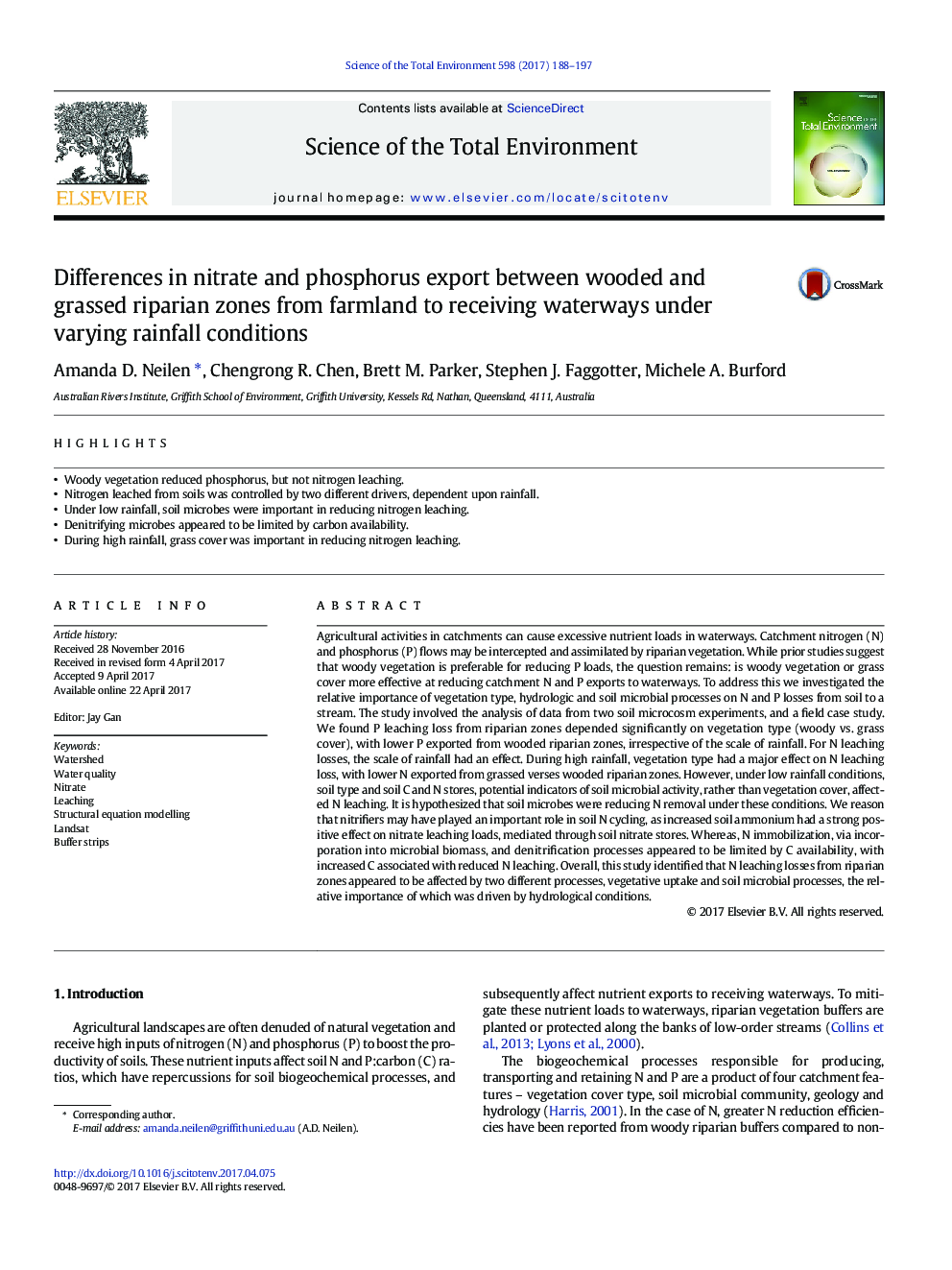| کد مقاله | کد نشریه | سال انتشار | مقاله انگلیسی | نسخه تمام متن |
|---|---|---|---|---|
| 5750933 | 1619699 | 2017 | 10 صفحه PDF | دانلود رایگان |
- Woody vegetation reduced phosphorus, but not nitrogen leaching.
- Nitrogen leached from soils was controlled by two different drivers, dependent upon rainfall.
- Under low rainfall, soil microbes were important in reducing nitrogen leaching.
- Denitrifying microbes appeared to be limited by carbon availability.
- During high rainfall, grass cover was important in reducing nitrogen leaching.
Agricultural activities in catchments can cause excessive nutrient loads in waterways. Catchment nitrogen (N) and phosphorus (P) flows may be intercepted and assimilated by riparian vegetation. While prior studies suggest that woody vegetation is preferable for reducing P loads, the question remains: is woody vegetation or grass cover more effective at reducing catchment N and P exports to waterways. To address this we investigated the relative importance of vegetation type, hydrologic and soil microbial processes on N and P losses from soil to a stream. The study involved the analysis of data from two soil microcosm experiments, and a field case study. We found P leaching loss from riparian zones depended significantly on vegetation type (woody vs. grass cover), with lower P exported from wooded riparian zones, irrespective of the scale of rainfall. For N leaching losses, the scale of rainfall had an effect. During high rainfall, vegetation type had a major effect on N leaching loss, with lower N exported from grassed verses wooded riparian zones. However, under low rainfall conditions, soil type and soil C and N stores, potential indicators of soil microbial activity, rather than vegetation cover, affected N leaching. It is hypothesized that soil microbes were reducing N removal under these conditions. We reason that nitrifiers may have played an important role in soil N cycling, as increased soil ammonium had a strong positive effect on nitrate leaching loads, mediated through soil nitrate stores. Whereas, N immobilization, via incorporation into microbial biomass, and denitrification processes appeared to be limited by C availability, with increased C associated with reduced N leaching. Overall, this study identified that N leaching losses from riparian zones appeared to be affected by two different processes, vegetative uptake and soil microbial processes, the relative importance of which was driven by hydrological conditions.
Journal: Science of The Total Environment - Volume 598, 15 November 2017, Pages 188-197
